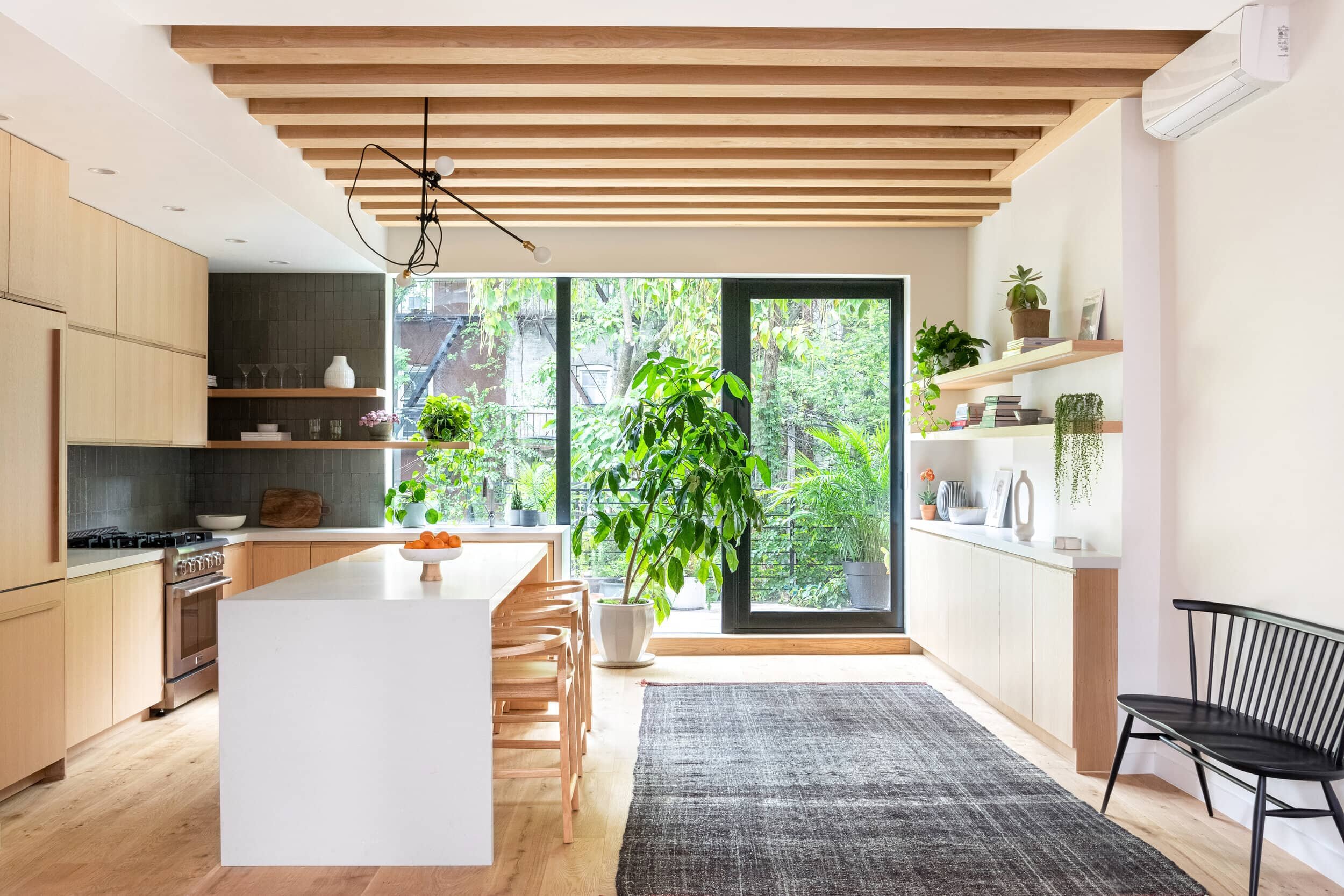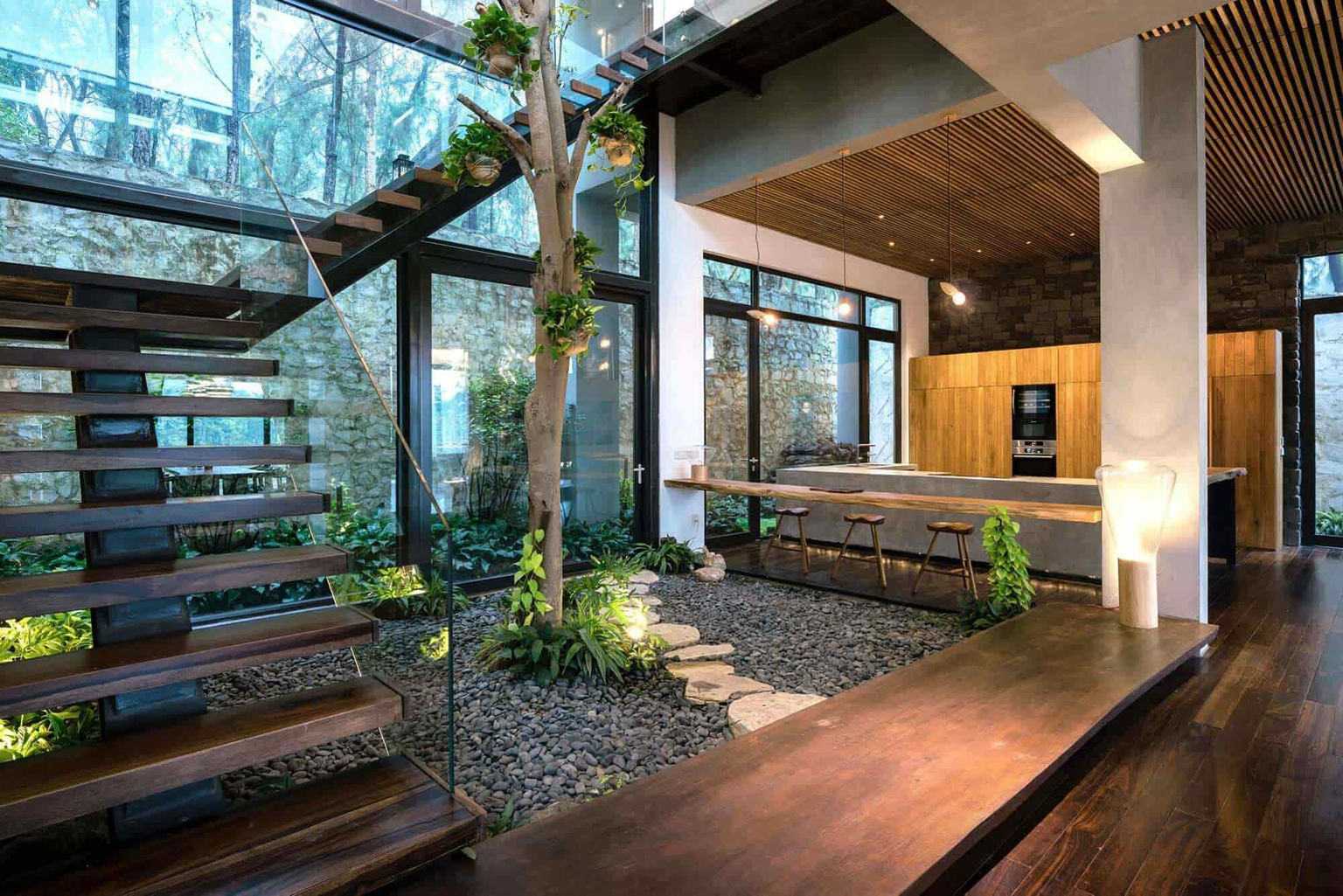Sustainable design is a concept that has gained significant attention in recent years, and for good reason. It refers to the practice of creating living spaces that are environmentally friendly, socially responsible, and economically viable. In other words, it is about designing homes that have a minimal impact on the planet while also promoting health and well-being for its occupants. In this blog post, we will explore the various aspects of sustainable design and provide you with practical tips and tricks to incorporate it into your own home.
Summary
Sustainable design is important for reducing your environmental impact and creating a healthier home.
Principles of sustainable design include using renewable resources, minimizing waste, and maximizing energy efficiency.
Eco-friendly materials like bamboo, recycled glass, and reclaimed wood can be used in your home.
Energy-efficient lighting and appliances can save you money on your energy bills.
Water conservation can be achieved through low-flow fixtures, rainwater harvesting, and xeriscaping.
Why Sustainable Design is Important for Your Home
a) Environmental benefits of sustainable design
One of the primary reasons why sustainable design is important for your home is its positive impact on the environment. By adopting eco-friendly practices such as reducing energy consumption, conserving water, and using renewable materials, you can significantly reduce your carbon footprint. This means less greenhouse gas emissions being released into the atmosphere, which helps combat climate change.
b) Health benefits of sustainable design
Sustainable homes are designed with occupant health in mind. They prioritize indoor air quality by using non-toxic materials that do not emit harmful chemicals or volatile organic compounds (VOCs). Additionally, these homes often incorporate natural ventilation systems to improve air circulation and reduce the risk of respiratory issues such as asthma or allergies.
c) Economic benefits of sustainable design
Contrary to popular belief, sustainable design can actually save you money in the long run. Energy-efficient appliances and lighting fixtures help lower utility bills by reducing energy consumption. Furthermore, incorporating water-saving features can lead to significant savings on water bills over time.
Understanding the Principles of Sustainable Design
To truly embrace sustainable design principles in your home, it’s essential to understand three main principles: reduce, reuse, recycle.
a) Reduce
The first principle focuses on minimizing waste generation by consuming fewer resources overall. This can be achieved through conscious decision-making when purchasing items for your home. Opt for products with minimal packaging, choose durable materials that will last longer, and avoid unnecessary consumption.
b) Reuse
The second principle encourages the reuse of materials whenever possible. Instead of throwing away items that are no longer needed, consider repurposing them or donating them to others who can make use of them. This not only reduces waste but also promotes a circular economy.
c) Recycle
The third principle emphasizes the importance of recycling materials to divert them from landfills. Separate your waste into recyclable and non-recyclable categories and ensure that recyclable items are properly disposed of in designated recycling bins or centers.
Choosing Eco-Friendly Materials for Your Home
When it comes to sustainable design, choosing eco-friendly materials is crucial. These materials are typically sourced sustainably, have a lower environmental impact during production, and can be recycled or reused at the end of their life cycle.
a) Overview of eco-friendly materials and their benefits
Eco-friendly materials include bamboo flooring, reclaimed wood furniture, recycled glass countertops, low VOC paints, and natural fiber textiles such as organic cotton or hemp. These options not only reduce the demand for virgin resources but also contribute to healthier indoor air quality due to their lack of toxic chemicals.
b) Tips for choosing eco-friendly materials for different areas of your home
In the kitchen, opt for cabinets made from sustainably harvested wood or choose countertops made from recycled paper composite instead of traditional granite or marble. In bathrooms, consider using water-efficient fixtures such as low-flow toilets and faucets while opting for tiles made from recycled content. For flooring throughout your home, explore options like cork or linoleum which are renewable resources with minimal environmental impact.
Energy-Efficient Lighting and Appliances for Your Home
a) Explanation of energy-efficient lighting and appliances
Energy-efficient lighting refers to using light bulbs that consume less electricity while providing adequate illumination. LED bulbs are a popular choice due to their long lifespan and low energy consumption. Energy-efficient appliances, on the other hand, are designed to use less electricity or water compared to conventional models without compromising functionality.
b) Benefits of using energy-efficient lighting and appliances
By switching to energy-efficient lighting and appliances, you can significantly reduce your home’s energy consumption. This not only helps lower your utility bills but also reduces the demand for fossil fuels used in electricity generation, thereby reducing greenhouse gas emissions.
c) Tips for choosing energy-efficient lighting and appliances for your home
When selecting light bulbs, opt for LED or CFL bulbs that have a high lumens-to-watt ratio. Look for the ENERGY STAR label when purchasing appliances as it indicates that they meet strict efficiency standards set by the Environmental Protection Agency (EPA). Additionally, consider investing in smart home technology that allows you to monitor and control your energy usage more effectively.
Water Conservation in Your Home: Tips and Tricks
a) Overview of water conservation and its importance
Water conservation is an essential aspect of sustainable design as it helps preserve this precious resource. By reducing water wastage in our homes, we can ensure its availability for future generations while also saving money on water bills.
b) Tips for conserving water in different areas of your home
In bathrooms, install low-flow showerheads and faucets that restrict water flow without compromising performance. Fix any leaks promptly as even small drips can waste significant amounts of water over time. In gardens, consider installing drip irrigation systems or collecting rainwater to minimize reliance on municipal supplies.

Maximizing Natural Light and Ventilation in Your Home
a) Benefits of natural light and ventilation
Maximizing natural light not only reduces reliance on artificial lighting but also has numerous health benefits such as improved mood, increased productivity, and better sleep quality. Similarly, proper ventilation helps remove indoor pollutants while providing fresh air circulation throughout your home.
b) Tips for maximizing natural light and ventilation in your home
Position furniture and mirrors strategically to reflect natural light into darker areas of your home. Install skylights or larger windows to allow more sunlight to enter. To enhance ventilation, consider installing ceiling fans or opening windows strategically to create cross-ventilation.
Creating a Sustainable Garden and Outdoor Space
a) Benefits of a sustainable garden and outdoor space
A sustainable garden not only enhances the beauty of your home but also provides numerous benefits for the environment. It helps reduce stormwater runoff, provides habitat for wildlife, improves air quality, and can even provide you with fresh produce if you choose to grow your own food.
b) Tips for creating a sustainable garden and outdoor space
Choose native plants that are adapted to the local climate as they require less water and maintenance compared to exotic species. Implement rainwater harvesting systems such as rain barrels or permeable paving materials that allow water infiltration into the ground rather than running off into storm drains.
 Eco Friendl
Eco Friendl
Reducing Waste in Your Home: Recycling and Composting
a) Overview of recycling and composting
Recycling involves converting waste materials into new products instead of sending them to landfills. Composting, on the other hand, is the process of decomposing organic waste such as food scraps or yard trimmings into nutrient-rich soil amendments.
b) Benefits of recycling and composting
By recycling materials such as paper, plastic, glass, or metal, we conserve resources by reducing the need for virgin raw materials extraction. Composting organic waste not only diverts it from landfills but also produces nutrient-rich soil that can be used in gardens or landscaping projects.
c) Tips for reducing waste in your home through recycling and composting
Set up designated recycling bins throughout your home for easy sorting of recyclable items. Educate yourself about local recycling guidelines so that you know what can be recycled in your area. Start a compost pile or invest in a composting bin to turn food scraps and yard waste into nutrient-rich soil for your garden.
Sustainable Design on a Budget: Affordable Tips and Tricks
a) Overview of affordable sustainable design options
Sustainable design doesn’t have to break the bank. There are numerous affordable options available that can help you create an eco-friendly home without compromising on style or functionality.
b) Tips for incorporating sustainable design into your home on a budget
Shop at thrift stores or online marketplaces for second-hand furniture or decor items instead of buying new. Upcycle old furniture by giving it a fresh coat of paint or reupholstering it with eco-friendly fabrics. Consider DIY projects such as making your own cleaning products using natural ingredients like vinegar, baking soda, and essential oils.
The Benefits of Incorporating Sustainable Design into Your Home
Incorporating sustainable design principles into your home offers numerous benefits that extend beyond personal satisfaction.
By reducing energy consumption, conserving water, and minimizing waste generation, you contribute to the global effort in combating climate change and preserving our planet’s resources for future generations.
Furthermore, sustainable homes promote better indoor air quality which can lead to improved health outcomes such as reduced respiratory issues and allergies.
Lastly, embracing sustainable design practices can save you money in the long run through reduced utility bills and lower maintenance costs associated with durable materials.
In conclusion, sustainable design is not just a passing trend but rather an essential approach towards creating healthier homes while protecting our environment. By implementing the tips and tricks discussed in this blog post – from choosing eco-friendly materials to conserving water – you can make significant strides towards creating a more sustainable living space for yourself and future generations.
So why wait? Start incorporating these practices today and be part of the solution!